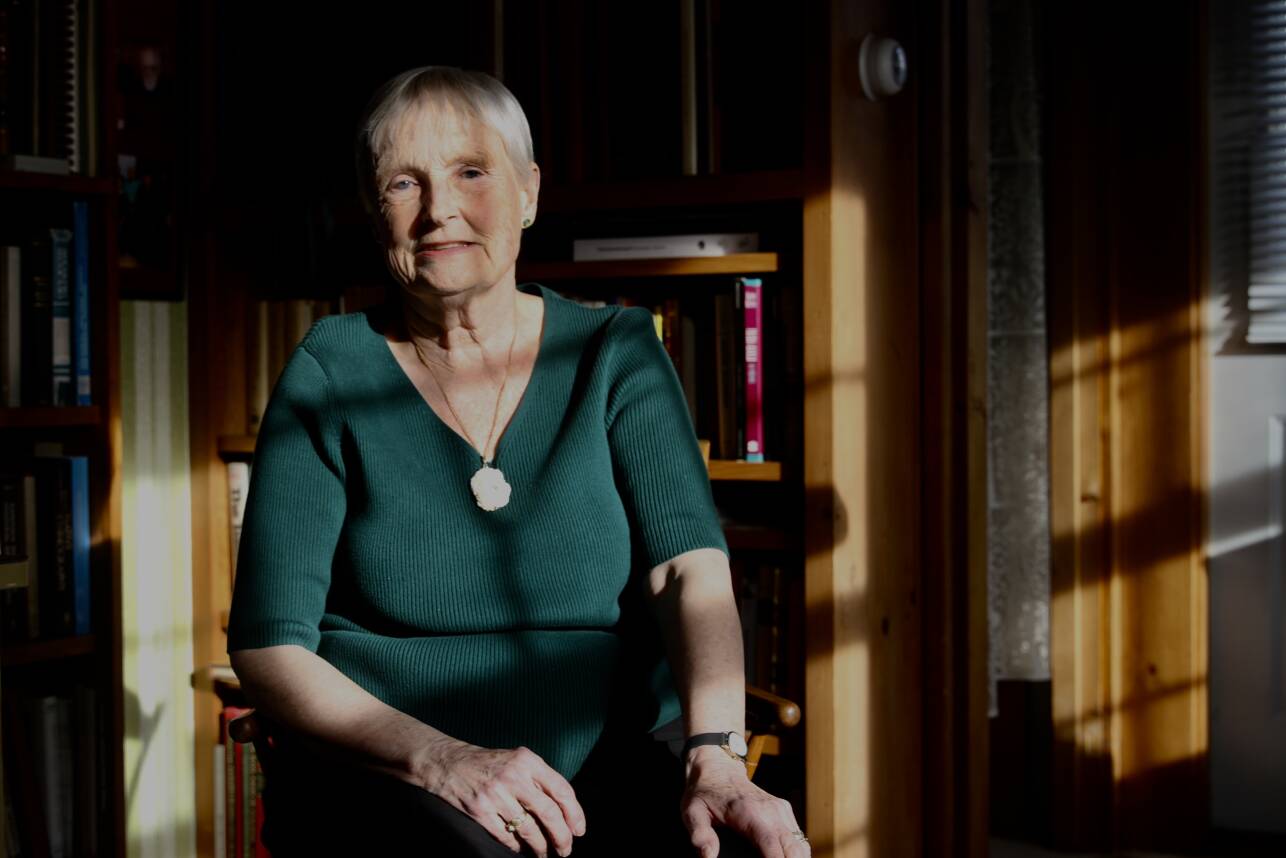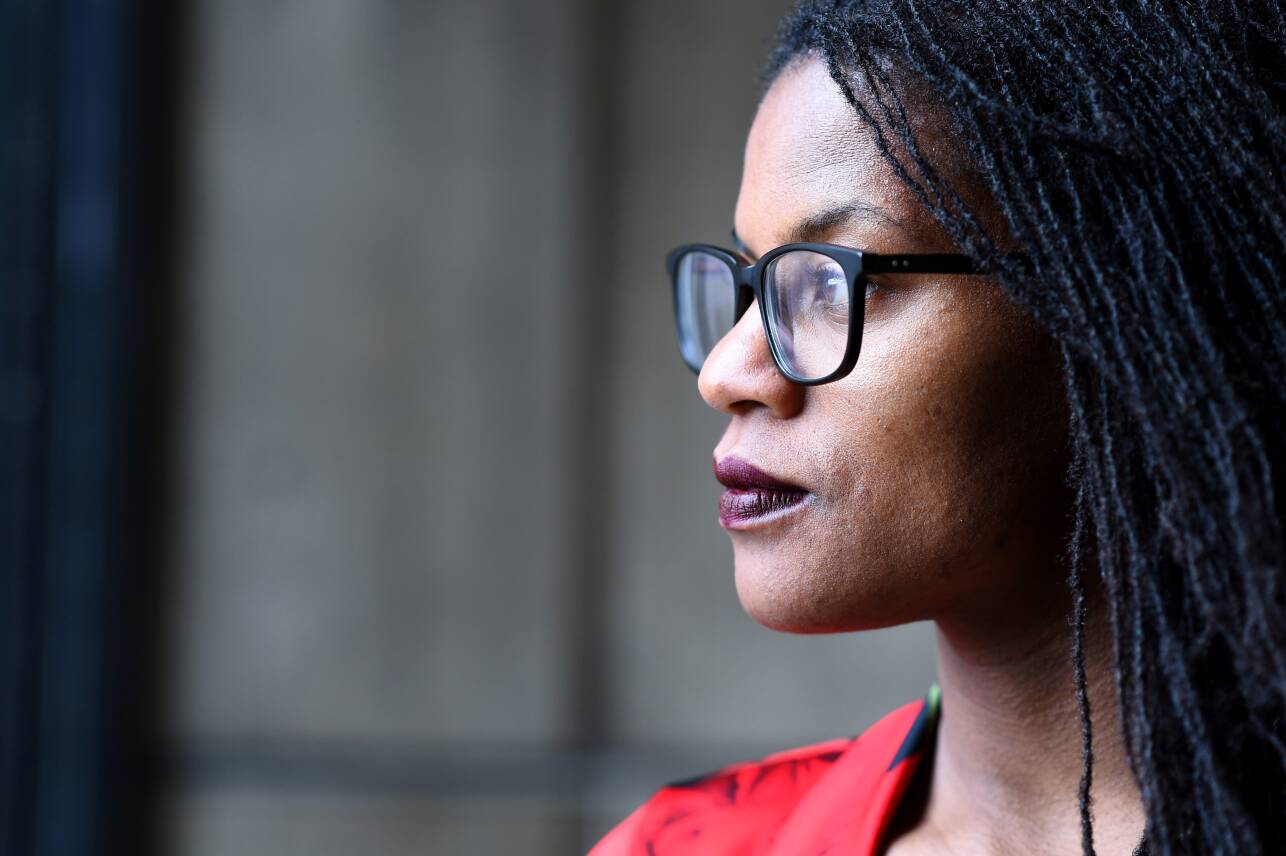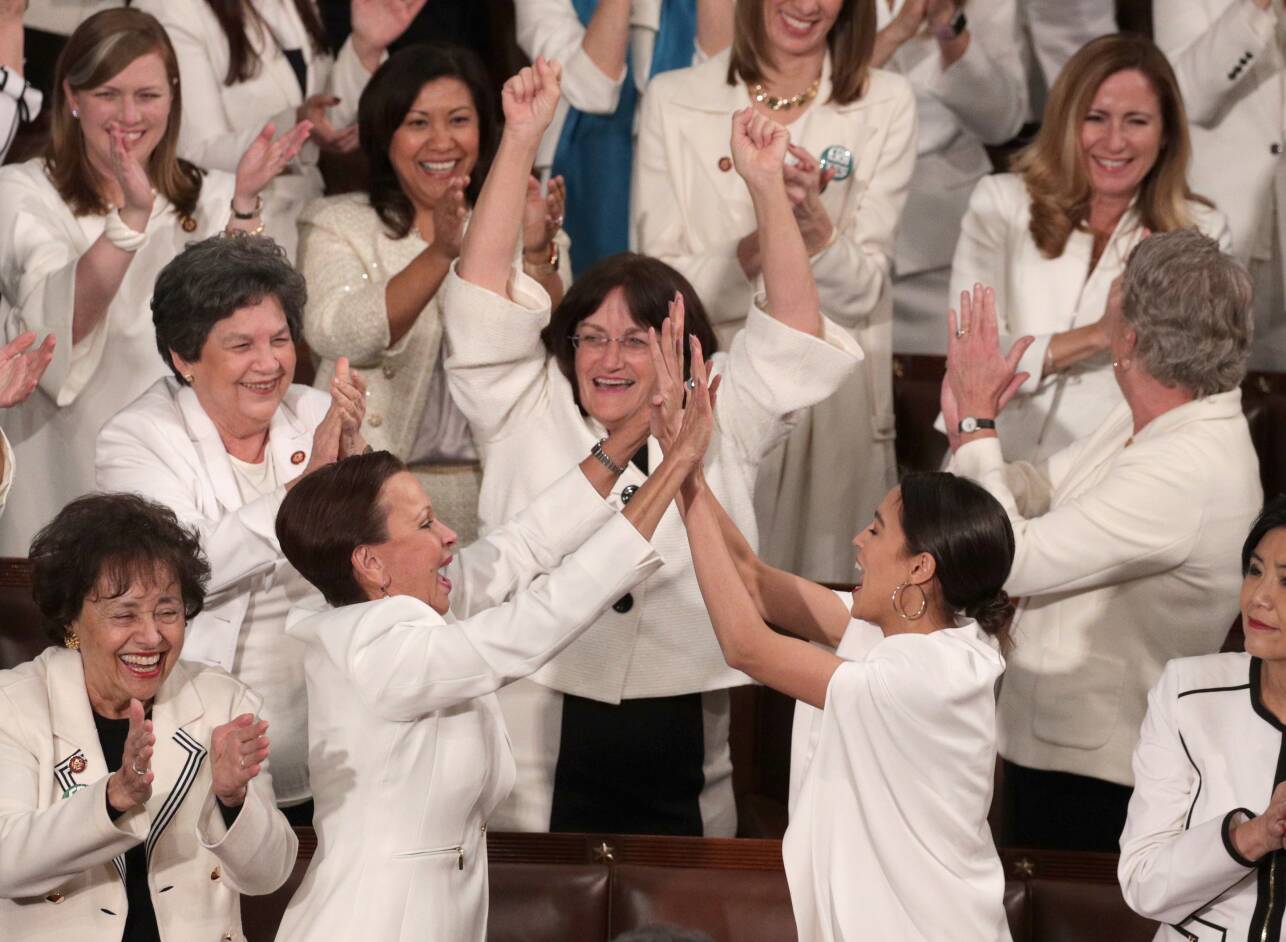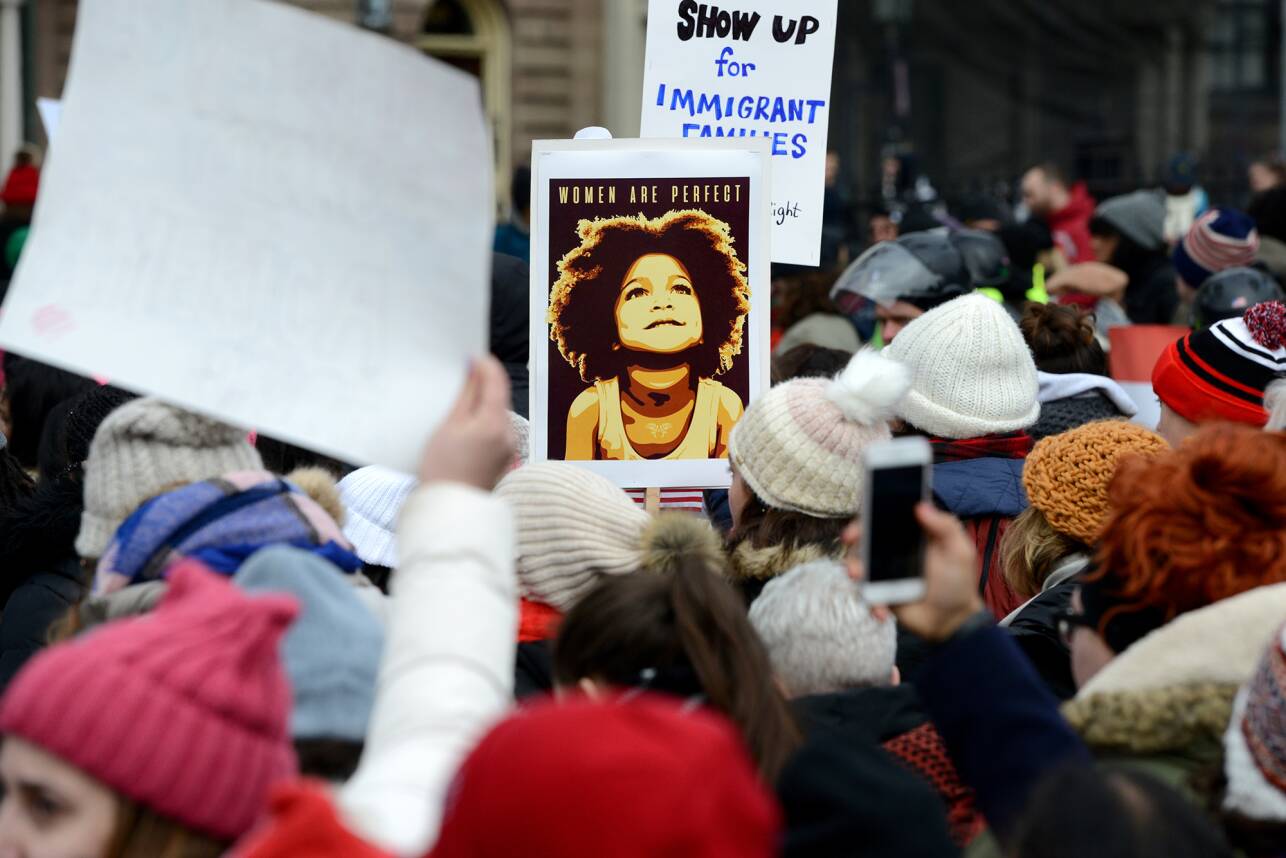It was about 5:45 p.m. on a recent Friday, and Frances Karttunen was huddling with her campaign manager going over their notes, prepping for the night ahead. In just a few minutes, about a dozen key supporters would gather at her friend’s modest, shingled Nantucket home tucked away on a side street. The attendees, most of whom were long-time residents, weren’t there so much to be convinced to vote for Karttunen, who is running for the town’s select board. Rather they were there to hear the message their candidate wants them to broadcast to the rest of the island.
After the crowd filtered in and the wine had been poured, the petite 76-year-old academic linguist stepped onto a stool and launched into her pitch, running through her top priorities: services for the elderly, affordable housing, and preparing for climate change. And then she turned to what she sees as another critical issue — the lack of diversity on the board.
“Nantucket voters feel quite often that their voices aren’t heard,” said Karttunen. “We need more people of all ages representing us in town government. We need more people from diverse ethnic backgrounds. And, yes, it means we need to elect more women.”

Like most municipalities in Massachusetts, Nantucket has struggled to diversify its select board — the executive arm of local town government — even in recent years. Just about a dozen women in the town’s history have served on the board, compared to hundreds of men. The first, Anne Ring, was elected in 1926. It took almost five decades for the town to seat another woman on the board.
Nantucket is not unique. Across the Bay State — well known for its progressive politics — town select boards are still largely dominated by men. Of the almost 1200 board members statewide, a little over 300 are women, according to statistics compiled by WGBH News. Eighty-five towns have boards with no female members, while only two — Berlin and Shutesbury — have boards without men. The pattern is repeated in the cities, where 176 of 603 council seats are held by women. Ten of 47 mayors are female. (The total number of women mayors is actually down from 2008, when there were 11.)
“As progressive as we seem, Massachusetts is the original old boys’ club,” said Barbara Lee, a Cambridge-based philanthropist and activist who has founded two eponymous organizations dedicated to advancing women in politics. “For centuries, politics in Massachusetts has been dominated by older white men. Although we’ve made encouraging progress in recent years, there is still a long way to go in terms of women’s representation.”
This year’s election in Nantucket, which will take place on April 9, is something of an anomaly. Of the six candidates vying for two select board seats, four are first-time female candidates. It’s a shift that local activists are trying to recreate from Abington to Yarmouth.
Since the Women’s March in 2017, momentum has been building behind women running for office at all levels of government. And while women were elected in historic numbers in 2018, in Massachusetts, the gains are still limited, said Ann Bookman, director of the Center for Women in Politics and Public Policy at UMASS Boston.
Bookman’s organization, which encourages women to become more involved in politics and public policy, has tracked representation by gender in the Massachusetts State House over the last four decades. Since the early 2000s, the percentage of women serving as lawmakers on Beacon Hill had hovered around 25 percent. Last year, that number ticked up slightly to 28.5 percent.
Despite being the highest level ever, Massachusetts still only ranks 27th nationally in terms of the proportion of female legislators, according to the Center for American Women and Politics, or CAWP, at Rutgers University. For comparison, Nevada’s legislature is 50.8 percent female, which puts it in first place. And all of the other New England states rank above Massachusetts. Vermont is fifth nationwide, with 40 percent female representation.
In the history of the commonwealth, only 10 women — four are currently in office — have held statewide elected executive positions. (The first, Evelyn Murphy, became lieutenant governor in 1987.) Voters have never elected a female governor, and Massachusetts didn’t get its first female U.S. senator until Elizabeth Warren was elected in 2012.
“We have to be really careful about using terms like ‘Pink Wave’ or ‘Year of the Woman,’” Bookman said. “We are just beginning to see increases. While they are significant, we don’t want to overstate them.”
By The Numbers
Between 2008 and 2018, the number of female city councilors rose from about 20 percent to 29.2 percent. Still, there is a growing sense among activists and politicians on both sides of the aisle that it’s not enough. Women make up slightly more than half the population. Political representation should mirror that, they argue.
“It’s important to have local offices and political bodies reflect their constituents, period,” said Boston City Councilor Lydia Edwards, who was elected in 2017. “Women bring different perspectives and real-life experiences that reflect the obstacles and opportunities of the people they represent.”
One area where women play a larger political role is on school boards, where they comprise just about 50 percent of the membership. The parity here doesn’t surprise most experts because women have historically been more involved in their children’s education and still tend to be more likely to volunteer for parent-teacher associations than men, making the school board a natural fit. Typically, they see the school board less as a political stepping stone and more as a way to advocate for their family and the children in their community.

The lack of women on select boards has a trickle-down effect. Board members can have the power to draw up the town meeting warrant, set priorities for the budget, and grant licenses and permits. They also hire administrative staff and make appointments to other town committees. “When you are a white man making these appointments, you perpetuate your network, which tends to be white and male,” said one selectwoman who is the sole female on her board and asked to remain anonymous for fear of reprisals. “And that makes it harder for women to get involved.”
Since the 2016 election, more women have thrown their hats in the ring. Last year, unprecedented numbers ran for the U.S. Senate, House of Representatives and governorships, according to CAWP. With Rep. Ayanna Pressley’s surprise win over incumbent Democrat Michael Capuano, Massachusetts’ federal delegation to Congress added one more woman, bringing the total to four out of 11 seats. The 2018 election cycle also saw more than 3500 women run for state houses nationwide, according to the National Conference of State Legislatures. Now, out of 7,383 seats, 2,117 are filled by women — a significant increase over the year before, but that’s still only about 28.7 percent.

This isn’t the first time America has seen a rising tide of female candidates. In 1992, a little more than a year after Anita Hill accused eventual Supreme Court Justice Clarence Thomas of sexually harassing her, a number of records were set. More than 100 women ran for the House of Representatives, and 47 were elected. Four women were elected to the Senate for the first time, bringing the total to six. More women were on the ballot in 2018, but the incremental increase in the number elected — in the House of Representatives, for example, the number of women rose from 87 to 102 even though 476 women ran — has given some activists pause. The Senate went from 23 female members to 25.
“In 26 years, women have barely made a dent,” said Jennifer Nassour, the co-director of ReflectUs, a non-partisan organization that aims to bring more women into the political process. “It’s horrifying to me that this is where we are.”
Nassour, the former chair of the Massachusetts Republican Party, expects — unlike in the early 1990s when enthusiasm fizzled out shortly after the election — that more female candidates will step up in 2020 for a variety of reasons. There’s more support now from grassroots groups — several have sprung up in the last decade — to both encourage women to run for office and give them the training and networks necessary for being successful. More women are opting to challenge incumbents rather than wait for “their turn.” But one of the biggest factors, said Nassour, is President Donald Trump.
In Massachusetts, Trump’s attempted repeal of the Affordable Care Act, his threats to defund Planned Parenthood, the rollback of environmental protections and other policies supported by the Republicans in Congress have fueled a handful of high-profile campaigns. Pressley campaigned on a platform similar to Capuano’s, but argued that the Democrats needed new and more diverse voices to stand up to the Trump agenda. State Rep. Tram Nguyen, a first-time candidate who unseated an incumbent last November, made a similar argument. “Massachusetts is a blue state, but can we make progress?” she asked. “Definitely. We have to step up at the State House to make sure we protect the policies and programs that are being weakened at the federal level.”

That’s a sentiment that has filtered down to select board and city council races, as there is a growing sense that the way around gridlock in Washington is to tackle issues closer to home. To combat climate change, Watertown passed an ordinance late last year that requires solar panels on most new commercial buildings. Somerville has been a sanctuary city for more than three decades and reaffirmed its commitment to that status just after Trump was elected on a platform of pushing for more deportations of undocumented immigrants.
“Change can start in small towns, and I’ve seen that happen” said Amy Shapiro, a first-time candidate for select board in Winchester. “Education, climate change, infrastructure — these are all things that are really relevant at the local level.”
Taking A Leap
In 2005, Kim Driscoll became the first woman elected mayor of Salem. On the campaign trail, she encountered a barrage of questions about her family and her temperament: What did her husband think about her candidacy? How would she handle raising her three children? Would she be tough enough to handle the job?
“There was outright conversation about whether Salem was ready for a female mayor,” said Driscoll.
Fourteen years later, voters are still asking the same questions. But sexism isn’t the only obstacle women running for office face. The biggest hurdle for any challenger is incumbency, which favors the men already in power. It is easier for an incumbent to raise money and find volunteers. They have deeply entrenched networks, better name recognition and frequently benefit from running unopposed. “There is a silent agreement that you don’t challenge a sitting elected official,” said Pamela Berman, president of the Massachusetts Women’s Political Caucus. “It’s such a strongly held belief here. We have been told that we shouldn’t endorse women running against men already in the state legislature.”
Then there’s the cost of child care. Women, who tend to be the primary caregivers, often either put off running or don’t run at all because they can’t afford to pay someone to watch their kids. By several measures, Massachusetts has the highest child care costs in the country, according to the latest data from Child Care Aware, a Virginia-based advocacy group that researches the issue. For infants, parents here pay an average of $20,415 annually for center-based care. The yearly price tag in California, the next most expensive state, is $16,542. Those expenses can’t be covered by campaign funds for state and local races in Massachusetts, so it’s up to candidates to absorb the costs.
Here’s another hurdle: Across the U.S., there is a confidence gap in how men and women view their qualifications for elected office. A 2017 survey by Politico, American University and Loyola Marymount University found that men are more often encouraged to run for office both during college and throughout their careers. At the same time, women are less likely to think they have enough experience or that their backgrounds are good enough — the lone exception being when it comes to running for school board.
“That impediment is real,” said Nina Liang, a Quincy city councilor at large and executive director of Emerge Massachusetts, an organization that recruits and trains women to run for office. “I had to be asked multiple times to run. I didn’t think it would be possible at first, but eventually people asked enough.”
As these obstacles, which are compounded for female candidates of color, become more well documented, more and more grassroots political groups are stepping up to inject more diversity into elections. Some of these groups, like Emerge Massachusetts, which saw its applications double last year, are teaching women how to be successful candidates. The curriculum gets down to the nuts and bolts of running a campaign: how to navigate filing deadlines, how to fundraise and how to create a social media strategy.
Winchester Inclusive, a group that formed a few days after the 2016 election, began when 40 friends and neighbors gathered to process Trump’s win. Eventually, it grew to a network of 100 people with a goal of encouraging more women and people of color to run for local office in their town. In the last two years, they’ve helped elect the first Latino member of the Winchester select board as well as a handful of first-time female candidates to the school and planning boards. Women Engaged for Civic Action on Nantucket, which two friends also created in the days following the 2016 election, has held forums to demystify what it’s like to run for office and to support women looking to be more active in local government.
The Massachusetts Women’s Political Caucus is forming regional boards to promote female candidates at the local level. The Greater Newburyport Regional Board was independently established right after Trump’s victory, and its members quickly realized there were no women on the Newburyport City Council. So, for their first mission, they fielded five women to run in 2017; two won. They partnered with the caucus last year. In total, there are four regional boards — the one in Greater Newburyport, one in the Berkshires, one in Worcester and one on the South Shore, which launched earlier this month.
These efforts aren’t just about parity in representation on city councils or select boards. They are about creating a “farm team” of seasoned female politicians who are eventually ready to run for higher office.
“We can’t wait until women are 40 for them to run for school board,” said Anne Moses, founder of IGNITE, a non-partisan group that aims to build political ambition in young women. “Women should be running for local offices in their 20s. There are 520,000 elected offices across the country, and 99 percent of those are local — everything from the Peoria City Council to the mosquito abatement board in Marin County. Young women need to be engaged, involved and start running sooner so they can start moving up through the pipeline.”
On Nantucket this year, there are 15 seats — from town clerk to the planning board and the housing authority — up for grabs. Twenty candidates — 10 women and 10 men — are on the ballot.
“There are four women running for select board in Nantucket and about a half dozen running for president this year,” said Karttunen. “Wouldn’t it be amazing if we got to the point where a woman running for any office was no longer the exception but the rule?”
Laura Colarusso is the digital managing editor at WGBH News. Emily Judem is a digital producer at WGBH News.
*The data for this story is based on multiple phone calls and emails to officials in all towns and cities in Massachusetts where the information was not available on their website. Some information may have changed since data was collected in fall/winter 2018-2019. We were unable to reach three municipalities: Florida, Granville and Russell. These three communities are not included in this data.







